A Guide To Choosing The Right Cabinet Hinge
Basic Hinge Types
When choosing a hinge, style comes first. The number of choices may seem overwhelming at first glance, but some will probably not be suitable for your project. If you want to replace your existing hardware for the same type, it is a relatively simple process. If you want to change the “type” of hinge, it must be a type suitable for your cabinets as there are many types of doors. Here are the basic hinge types.
“H” & “HL” Hinges
H & HL hinges get their name from their shape. They are available in both plain and decorative styles in a variety of finishes. These are visible hinges installed on the surface of the cabinet and the images show how they look with the door closed. They are not adjustable.
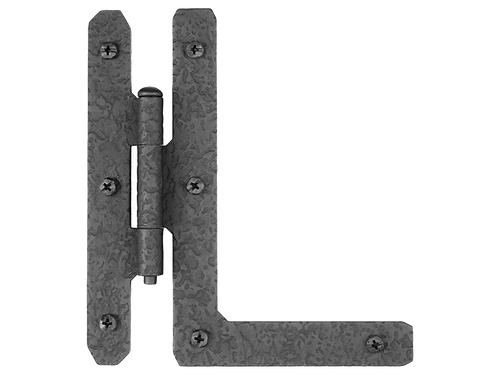
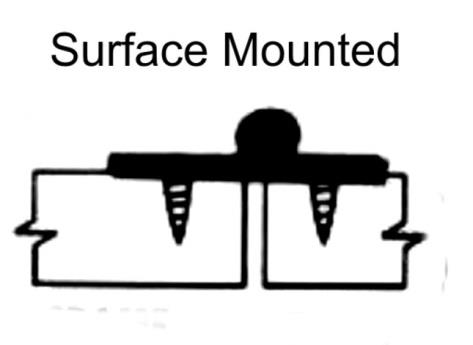
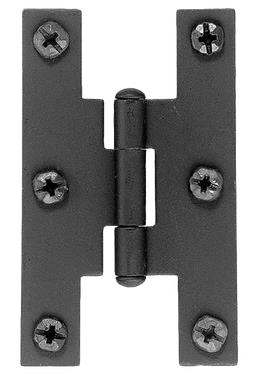
Strap Hinges
Strap hinges also mount on the outside of the door. They are range in size from 6” up to 30” to accommodate heavy doors and gates. They can also be used as a decorative element on doors or furniture. They are not adjustable.
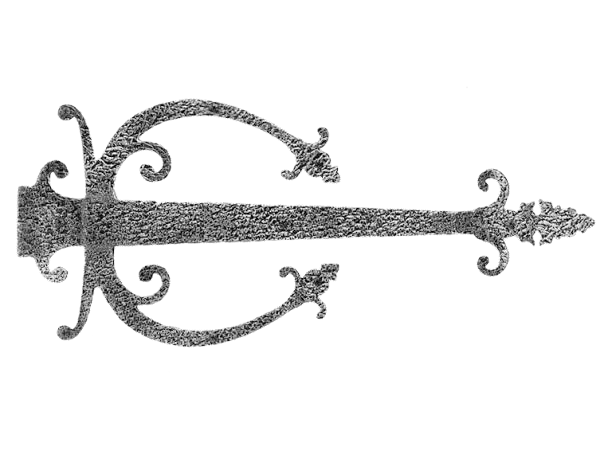

Full & Partial Wrap Hinges
Full and partial wrap hinges are strong and some models are adjustable. One side of the hinge attaches to the inner edge of the cabinet and the other to the door.
Holes are not cut in the door or frame. Instead, they are screwed into the frame and door. They are stronger because the part of the hinge that attaches to the frame wraps either partly, or entirely, around the edge of the frame as shown in the diagram. They are available in different sizes to match the thickness of the frame and door. Some wrap hinges are also self-closing and there are many styles and finishes to suit your décor and personal tastes.
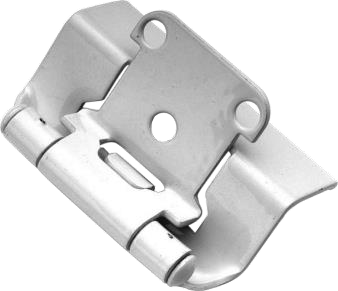
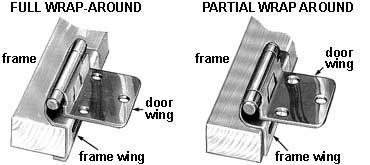
Butt Hinges
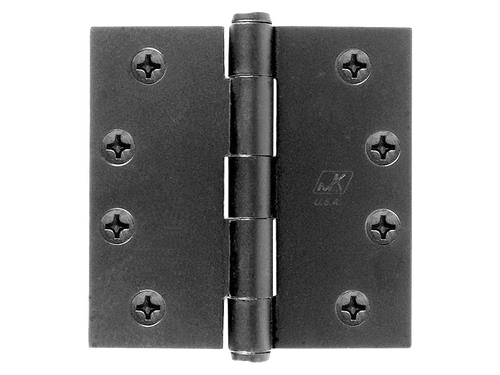
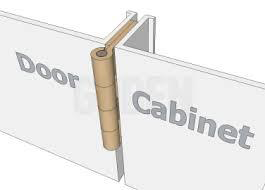
Butt hinges are one of the most common types of hinges used on interior and exterior doors. It consists of two leaves joined by a center pin. Each leaf has screw holes. Most butt hinges are mortised (recessed). An area is cut out of the edge of door and the edge of the frame to mount them so the hinge does not protrude.
The grooves cut into the frame and door match the shape of the hinge and when the door is shut the leaves come towards each other and only the narrow center pin of the hinge is visible.Some models of butt hinges are “self-mortised” so they do not require cuts in the door and frame.
Some are also adjustable to fine-tune the alignment of the door should it sag or shift over time. Butt hinges are available in a variety of attractive finishes and styles to suit your personal tastes and your décor.
Face Mount Hinges
Face mount hinges are partially concealed hinges. The part attached to the frame is visible, while the part attached to the door is on the back of the door is unseen, unless the door is open. These hinges vary in size because cabinet doors are of different thicknesses.
They can be self-closing and are available in many finishes and styles to suite your tastes and your particular cabinets.
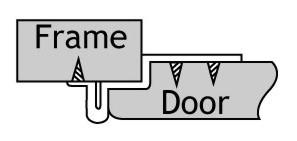
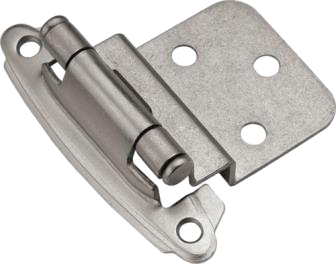
Surface Mount Hinges
European hinges are mounted completely behind the door as seen in the diagram. These are often adjustable and surface mounting does not require mortise installation.
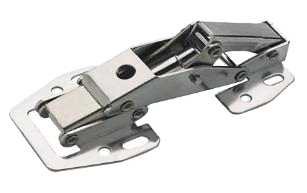
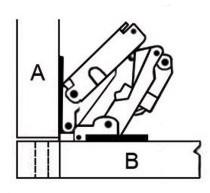
Soft Close Hinges
Soft close hinges are a type of surface mount hinge. They close softly and effortlessly no matter how hard you slam the door. They work with existing mounting plates, provide supreme adjustment and assemble easily. However, these hinges are best installed by a professional, not a layperson as they require precise adjustments.
If you want to utilize soft close hinges on your cabinets, we highly recommend you hire an installer who knows the intricacies of their installation. Speak to one of our customer service representatives if you wish to order.
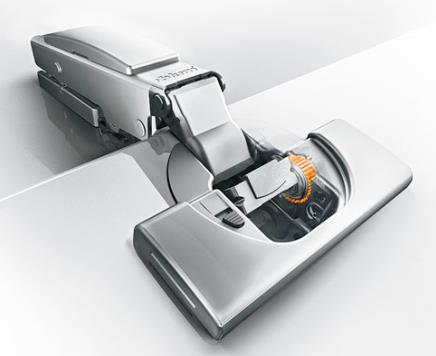
Demountable Hinges
These hinges allow you to remove the door if you want to do so for cleaning or for other reasons. There are both single and double demountable hinges.
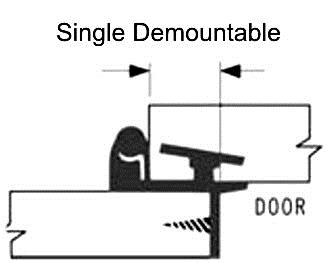
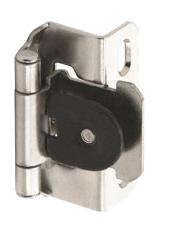
Single demountable hinges install with screws to the face of the cabinet frame, and the hinge slips into a slot on the edge of the door. Double demountable hinges have two slots - one in the face of the cabinet frame and one in the edge of the door.
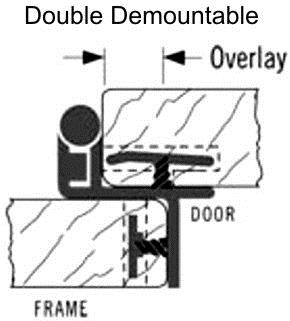
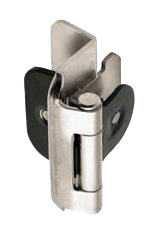
Self-Mortise Hinges
Self-mortise hinges are used on inset cabinet doors. These stylish, sturdy hinges feature decorative finials that add an elegant touch to your cabinets. The advantage of these hinges is that you do not cut mortises.
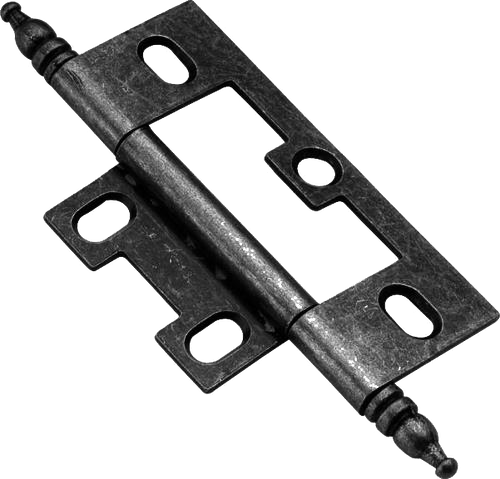
The downside is, with no mortises, if the screws are even protruding a bit, the hinge won't close properly. They do need to be installed precisely to ensure the door aligns properly to the frame too.
Types of Doors
The four basic types are shown in the diagram and many possible hinge choices are available for each type.

The door is larger than the opening and “lies over” it.

The door fits completely in the opening flush with the cabinet surface.

Part of the door is in the opening and part overlays the cabinet face.

Very similar to inset door, but surface mounted and visible.
Overlay Cabinet Doors
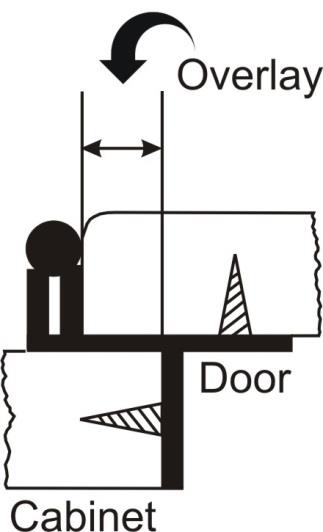
The overlay shown below can be matched to specific hinges of various dimensions. The most common are ¼”, 3/8” and ½”. There is also a variable hinge available, but it attaches to the surface of the cabinet, not the edge of the cabinet opening as shown in the diagram. Consequently, it can be used on various sizes of overlay. The overlay dimension is measured from the edge of the cabinet opening to edge of the cabinet door as it lies in the closed position on the cabinet. Please refer to the “measuring” section of this guide for more information. Overlay doors can used demountable hinges (single or double), face mount, flush mount and full and partial wrap hinges.
Full Inset Cabinet Doors
Full inset cabinet doors are used on full inset cabinets where the door butts up against the edge of the cabinet opening (see previous diagram). The door lays flush with the surface of the cabinet face. Full inset doors use either butt hinges or surface mounted cabinet hinges, such as H and HL hinges or strap hinges. There is also a specific full inset hinge available as seen in the image to the right.

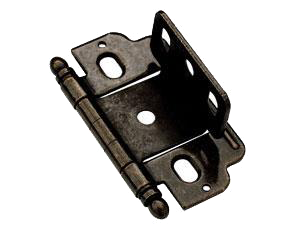
Offset Cabinet Doors
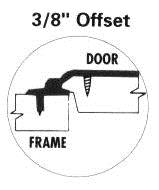
Many offset dimensions exist, however most offset hinges today are 3/8ʺ. This is an older cabinet style, but we do carry a good selection. Offset cabinet doors can use H, L and strap hinges, as well as surface (face mount) hinges. There is also a very specific hinge for offset cabinet doors available too. They are available as a pair (dual), or left or right mounted hinges, in 3/8" offset. Here is a picture of the specific dual hinge.
Partial Inset Cabinet Doors
The most commonly used partial inset cabinet door dimension today is the 3/8ʺ inset. The 1/2ʺ inset, 5/8ʺ inset and 3/4ʺ inset hinges were used in the 1950ʹs and 1960ʹs, but aren’t used in new construction. We still have stock n these older inset cabinet hinges with a limited selection of finish (polished brass, antique brass, chrome, satin nickel and oil rubbed bronze).

Hinges appropriate for partial inset doors include; demountable (single and double) face and flush mount, full and partial wrap and some H hinges. Please contact us if you have questions about whether a hinge you like is appropriate for your cabinet doors.
Important Information Regarding Screw Holes
If you are remodeling your home and your cabinets have older hinges, you will probably need to fill the existing screw holes. This is because the screw holes are in different places on newer hinges. A newer 3/8” partial wrap hinge in satin nickel will replace an outdated antique brass face mount hinge and work well. However, you will need to fill the holes from the old hinges and then sand and refinish the area. After that, you can drill new holes for the new hinges. Unfortunately, you cannot order custom hinges with matching screw holes either. This option simply isn’t available through the manufacturers.
Measuring
A face frame cabinet is a cabinet with a front panel the door rests on. An overlay door lies “on top” of the cabinet opening (the door is larger than the opening). The overlay dimension is how much bigger the door is than the opening of the cabinet. This is measured on the hinged side of the door.
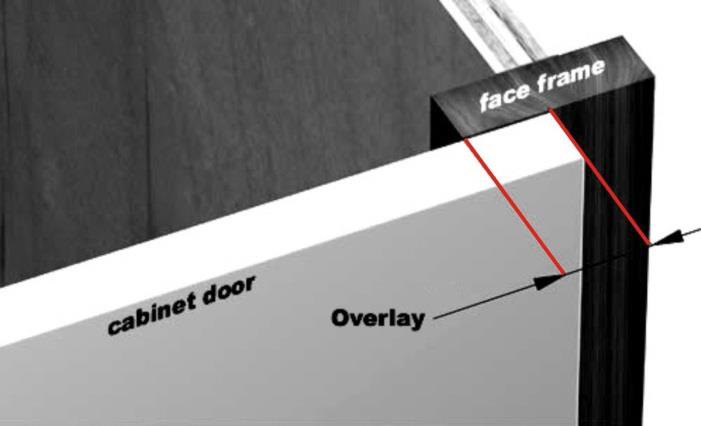
How to Measure Your Door Overlay
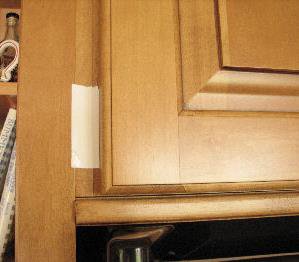
Apply a piece of tape to the frame of the cabinet on the hinged side of the door so that it even with the edge of the door.
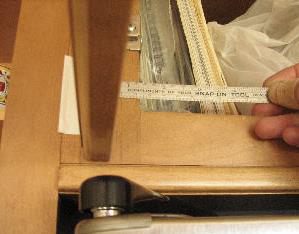
Open the cabinet door and measure from the edge of the tape (inside edge) to the edge of the opening of the cabinet. This is the overlay.
How to Measure the Inset on a Partial Inset Door
A partial inset door is used on a face frame cabinet. With the door closed, part of the thickness of the door fits inside the opening of the cabinet (inset) while part of the door overlays the cabinet opening (lip). In order to choose the proper hinge for this type of door you must measure both the inset dimension and the lip dimension.
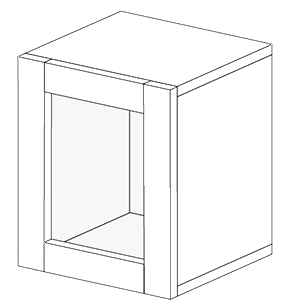
Semi-Concealed Partial Inset Hinge installed on cabinet door and face frame
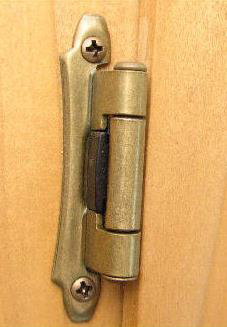
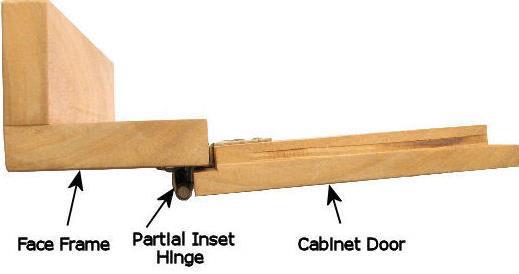
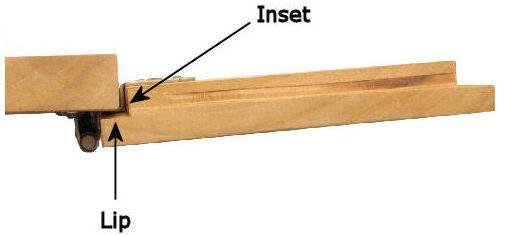
Lip Is Measured on the Back of the Door
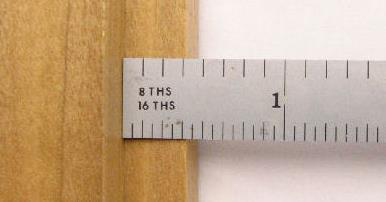
This is a 3/8” Lip
The standard lip dimension is 3/8ʺ. We do not have access to ½” and understand they are no longer made. Some customers use a 3/8” hinge by shaving off 1/8ʺ of the 1/2ʺ lip on their cabinet door.
Inset Is Measured on the Edge of the Door
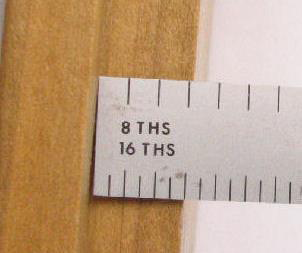
This is a 3/8” Inset
Possible inset dimensions include 3/8ʺ, 1/2ʺ, 5/8ʺ and 3/4ʺ. The 3/8ʺ inset has been in wide use for about 30 years. Earlier cabinets used 1/2ʺ, 5/8ʺ and 3/4ʺ.
Features & Finishes
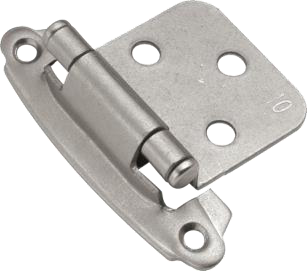
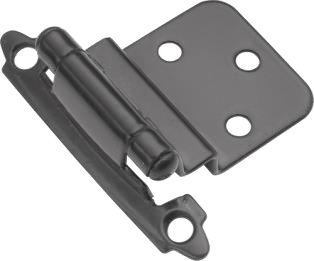
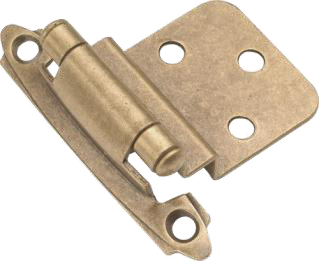
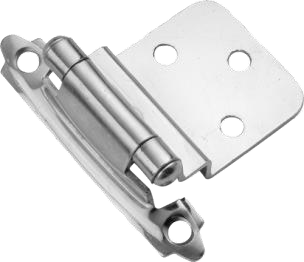
Once you’ve selected the type of hinge you need, you need to consider features and the finish you want. You may want a self-closing hinge, soft close, a clip-on hinge, or an anti-slam hinge for your cabinets. Hinges are made from various materials. Stainless steel brass, steel, bronze and other metals are available. Finishes include primed, polished and plated, and rust-resistant. You may be looking for a particular manufacturer, color or finish. When you find a hinge that looks promising, just click on the image and you will see the pertinent details. These include the finish, the hinge material, the inset and offset size (if applicable), whether the hinge is self-closing, mounting details, dimension and price. You can match to existing hardware by searching by the finish. Some hinges are available in custom colors. If you need instruction on how to measure, help in choosing an appropriate hinge or have any other questions or concerns, we can assist you. We are available via telephone, live chat and email. We also offer complementary one-on-one design consultations to learn about your vision so we can offer the best solutions for your project.

